How-to host a COVID-compliant regatta
Published on July 6th, 2020
Amid the health restrictions due to COVID-19, competitive sailing can occur, but getting everyone to buy-in is critical. However, with smart planning, clarity in communication, and strong leadership to ensure standards are maintained, the opportunity exists to host racing.
This is what happened with the Snipe Class, and in this report by Kristin Mullins (Regatta Co-Chair and epidemiologist with University of Maryland Medical Center) and Lisa Pline (Annapolis Snipe Fleet Captain), they explain how it was done:
Recently Severn Sailing Association (SSA) was fortunate to be able to host its first Invitational regatta in our “post-quarantine” world, the 2020 Snipe Colonial Cup in Annapolis, MD. It had been postponed from the first weekend of June to the weekend of June 27-28th, vacated by the cancelled 2020 Snipe US Nationals.
When we first discussed moving forward with the Colonial Cup it seemed a long shot. Quarantine measures were still in place, including no recreational boating or racing, but as the date approached and some of the restrictions were eased, we were able to envision a regatta that would be both safe and enjoyable for our competitors.
We are happy to say that even with the new “COVID era” requirements and precautions in place, it was a fun regatta and well worth the effort!
Here are some of the “Best Practices” we employed to make the regatta a success:
REGATTA MANAGEMENT:
• Capped Attendance: Early on, we capped the attendance at 20 boats, shooting for an event that would result in no more than 50 people on the lot. The cap of 50 persons in attendance came from initial CDC guidelines and later state guidelines. To ensure travelers did not squeeze local boats out, we gave locals a 24-hour “advance registration” period and we implemented a waitlist in case we could accommodate additional boats. As restrictions eased, and gatherings of 50+ were allowed, we determined that we could allow two more boats off the waiting list. We felt the boat lot and launch areas could accommodate these boats while maintaining the appropriate distancing.
• Lot Management: With the capped attendance, we were able to spread boats out on our lot to provide appropriate distances between competitors. We directed travelers to assigned locations and asked locals who do not normally keep boats on the lot to spread out. We had detailed lot drawings and were prepared to implement strict assigned locations and launch times (with assigned hoist operators) to maximize distancing on land, but this proved to be unnecessary as our competitors were mindful of others around the hoists and practiced physical distancing.
• On-line and pre-registration ONLY: This was easy and made for better regatta planning. This also aided our ability to make the lot assignments referenced above.
• Pre-regatta detailed email: We provided participants with all the regular and irregular things competitors would need to know including links to Sailing Instructions, waivers, club policies, and other COVID requirements.
• COVID-specific Waiver: This document was required to be signed by all competitors, skippers and crews. It was based off the US Sailing template provided in their Coronavirus Resources section.
• Zoom Skippers Meeting: We held this the night before the event and it turned out very well! Most competitors attended live, but just in case we recorded it to post on our website for anyone who couldn’t attend the meeting.
• No Social Activities: We did not host any dinners or social events as part of the Regatta. This was the hardest part, but again, ended up fine, since our club Snack Bar was open and had already implemented COVID policies (acrylic shield, marked 6’ distancing for line, no seating). Many competitors enjoyed beverages of their choice in the somewhat distanced social bubbles they felt comfortable with. Those competitors that were more risk-averse stayed apart from the groups or headed home for a shower and dinner. Info was posted to help competitors find outdoor dining areas open in the city.
• Awards Presentation: We did hold an awards presentation outdoors that allowed for distancing. We also streamed it on Facebook Live so that any of our competitors could view it from home, and a few did.
RACE MANAGEMENT:
SSA’s volunteer Standing Race Committee under the leadership of Barbara Vosbury had spent several months working on safe RC staffing requirements listed below, plus a few additional we added for the Invitational:
• Masks were required on RC boats with “outside of bubble” staffing
• RC staffing was reduced and family units were together on boats where possible
• Due to reduced staffing, we implemented a 3-minute audible-only start sequence (US Sailing Prescription Appendix U) using our automated system instead of the traditional visual and horn signals
• Three Minute Justice was the priority method for resolving protests. None were needed, but if the 3-Minute Justice had not come to a satisfactory conclusion, we were prepared to convene a Zoom/Virtual Protest Hearing post-regatta. Fortunately, it did not get tested! The best description we found for the 3-minute Justice system is from Watch Hill Yacht Club.
• All RC Boats had sanitizing cleansers for wash downs and sanitizing spray for surfaces, marks and tackle
COVID-19 COMPLIANT CLUB POLICIES:
Severn Sailing Association had done most of the hard work needed to able to be open. Some of these created minor inconveniences for competitors, but the policies were published ahead of time so that expectations were managed. Here are the most relevant SSA COVID policies:
• Masks required on the Property: not all competitors wore their masks at ALL times, but compliance was good for having buffs or similar around the neck that could be pulled up if they encountered others on the lot, left the vicinity of their boat, or were with-in 6 feet of others. A few younger competitors who did not have a mask were provided with them.
• Limits on Shower/Bathroom Facilities: The showers were closed and there was a 3-person limit for the bathroom at one time. This was the most inconvenient policy. After a hot day, the boat lot hose had to do!
• Outside wash stations: Two wash stations were added to the club to help minimize traffic through the bathroom facilities.
• Hand Sanitizer at all hoists: A large pump bottle of hand sanitizer was at each hoist.
• Socially distanced seating: Seating on our outside deck was arranged to provide appropriate physical distancing.
• New Signage: Signage was added around the club to draw attention to high contact areas and for touch/no touch points on handles, etc.
We couldn’t have held this event without the full support of our sailing club and the hard-working staff and volunteers that made the event possible. The success of the event was due primarily to the flexibility and forbearance of the competitors to roll with all the requirements and limitations!
There is clearly pent-up demand for getting out on the water, trying new things, and competing even if it takes some sacrifices. We heard from so many of our competitors that they were excited and happy to finally get back out on the water, and appreciated the efforts we took to keep everyone safe. We encourage fleets to lean into this moment and get your fleets out sailing!


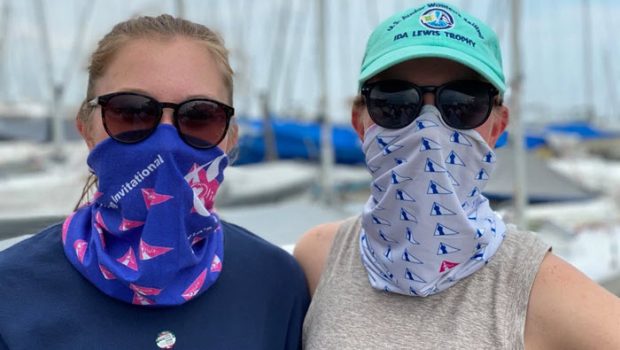


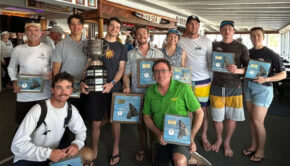
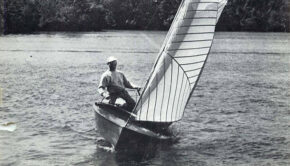
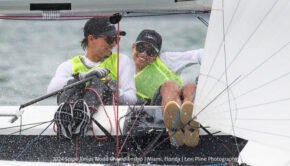
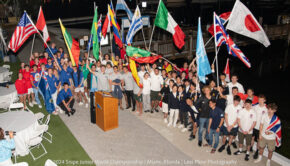
 We’ll keep your information safe.
We’ll keep your information safe.